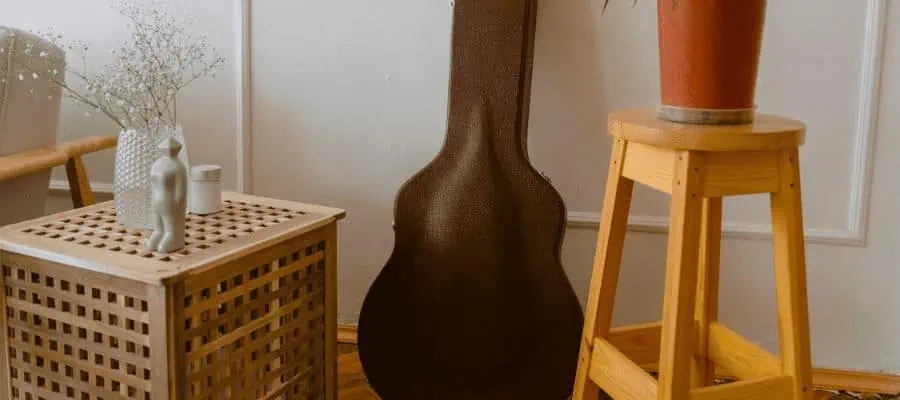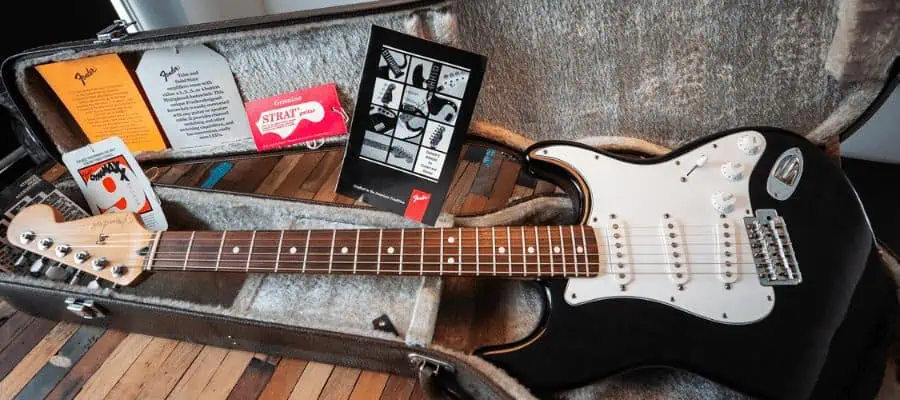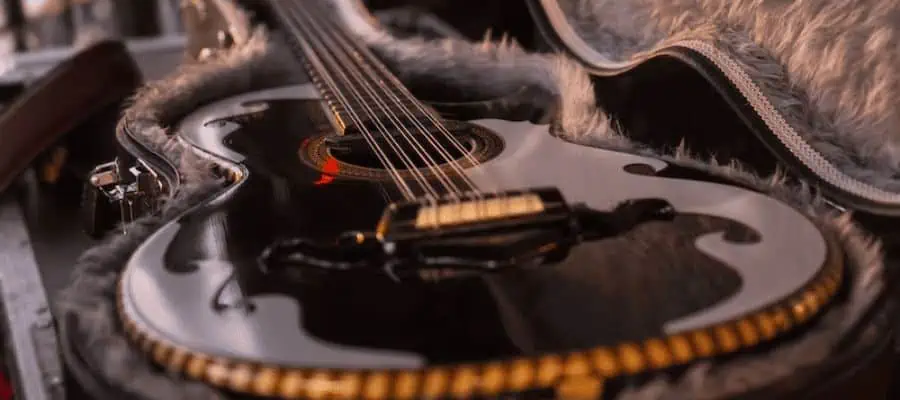When you bring a new guitar home, you might wonder how to introduce it to your playing routine. Guitars, like many wooden instruments, are sensitive to their surroundings. Changes in temperature and humidity can notably affect the wood, potentially altering the sound and playability.
Acclimatizing your new guitar can indeed be beneficial. When you allow time for the wood to adapt to local conditions, you can avoid tuning issues and structural stress.
It typically involves leaving the guitar in its case for some time to slowly adjust to temperature and humidity changes without being shocked by sudden fluctuations. This can help preserve the guitar’s longevity and maintain its sound quality.
The process of letting your guitar adjust to its new environment is known as acclimatization, and many guitarists consider it an essential step before the instrument is tuned and played extensively.
Understanding Guitar Acclimation

When you bring home a new guitar, it’s essential to understand how it responds to its environment through acclimation. This process is crucial for maintaining the longevity and playability of your instrument.
What is Acclimation?
Acclimation refers to the process by which your guitar adjusts to the local climate and environmental conditions. Wood, the primary material in guitar construction, is sensitive to temperature and humidity changes. As wood absorbs or releases moisture, it can expand or contract, affecting the guitar’s structure and tension.
Why Guitars Need to Acclimate
Guitars need to acclimate to prevent potential damage and to ensure optimal performance. The following points detail why acclimation is necessary:
- Stability: A properly acclimated guitar is more stable and less likely to experience warping or cracking.
- Tuning: Acclimated guitars hold their tuning better, making for a more reliable instrument.
- Playability: The neck and action of the guitar can be influenced by climatic shifts; proper acclimation keeps the guitar easy to play.
What to Consider When Acclimating a New Guitar?

When your new guitar arrives, letting it acclimate can preserve its condition and playability. Here are the primary points to consider
- Temperature and Humidity: Your guitar is made of wood sensitive to these factors. Acclimation helps avoid warping or cracking.
- Tuning Stability: Proper acclimation can enhance tuning stability and prolong string life.
- Long-term Care: While immediate acclimation is essential, maintain a consistent environment for your guitar to ensure longevity.
Practical Tips for Acclimating Your New Guitar

When you get a new guitar, gently ease it into its new environment to ensure longevity and consistent playability.
Ideal Acclimation Conditions
First, ensure that you bring your guitar into a room with stable temperature and humidity. A controlled climate with a temperature around 70°F (21°C) and humidity levels between 45% and 55% will create the ideal conditions for your new instrument. Avoid any extremes, as they can cause wood to warp or crack.
Step-by-Step Acclimation Process
- Leave the guitar in its case: Upon arrival, resist the urge to play it immediately. Keep the guitar in its case for about 6 to 24 hours, depending on how different the weather conditions are compared to the ideal conditions, to slowly adjust to room conditions.
- Tune it gradually: After the waiting period, gently tune the guitar to the standard pitch, aware that new strings and wood may take time to stabilize.
Long-Term Care Post-Acclimation
After the initial acclimation, your guitar will require regular check-ups and maintenance.
- Monitor ambient conditions: Always keep a hygrometer or case in the room to monitor humidity levels.
- Regular maintenance: Perform string changes in fretboard conditioning and check the truss rod adjustment at least twice a year or as necessary.
Continuous attention to these details will keep your new guitar in prime condition for years
Conclusion
Acclimating to a new guitar is a good idea for instrument care, especially if you are bringing the guitar somewhere with high temperature or humidity levels. Taking the time to take it out of its case and letting it get used to the weather conditions slowly can prolong a guitar’s life.
Depending on the conditions, you don’t necessarily need to wait for days; a few hours can often suffice. However, be mindful and patient to ensure your instrument remains in top shape for years to come.

Recent Posts
Some guitarists insist on buying an expensive amplifier with their electric guitar. They assume that this is a must for every type of guitarist out there. However, in some situations, this isn’t...
Top 50 Free Realistic Guitar VST Plugins With Sound Examples
As technology has rapidly advanced in the recent decade, computers are stealing more and more roles from physical musical instruments and accessories. Nowadays, you do not need expensive amps,...

